Author: Matt Del Fiacco
Homebrewers have had a pendulum-like relationship with Crystal/Caramel malts in recent history, swinging from usage that would now be considered “excessive” to the exclusion of crystal malts of any kind. Like all things, the context of usage is important, though it seems that a more restrained use of Crystal malt is still prevalent in modern homebrew recipes.
Carahell is 10 °L caramel malt produced by Weyermann that is lauded for its ability to contribute a sweet malt character as well as a fuller body to beer. While seemingly similar to Crystal 10, Weyermann’s process for Carahell is said to produce a malt that, when used as 10-15% of the grist, has a noticeable impact on foam stability and retention, similar to products like Carapils and CaraFoam.
Recently, I haven’t been using Crystal malts much in the beers I brew, save for the occasional Imperial Stout in which I include a fairly hefty dose. With so many anecdotal reports of Carahell’s positive influence on body and foam, I was curious of the impact it would have on a crisp pale lager and put it to the test!
| PURPOSE |
To evaluate the differences between a beer made with Carahell malt and an otherwise similar beer made without Carahell malt.
| METHODS |
For this xBmt, I decided on a crisp Kellerbier, as I thought it would fit well with and without the Carahell while also letting any differences shine.
CaraHellerBier
Recipe Details
| Batch Size | Boil Time | IBU | SRM | Est. OG | Est. FG | ABV |
|---|---|---|---|---|---|---|
| 5 gal | 90 min | 17.6 IBUs | 4.0 SRM | 1.043 | 1.007 | 4.8 % |
| Actuals | 1.043 | 1.006 | 4.9 % | |||
Fermentables
| Name | Amount | % |
|---|---|---|
| Barke Pilsner (Weyermann) | 6.687 lbs | 89.92 |
| Carahell (Weyermann) | 12 oz | 10.08 |
Hops
| Name | Amount | Time | Use | Form | Alpha % |
|---|---|---|---|---|---|
| Tettnang | 22 g | 90 min | First Wort | Pellet | 4.5 |
Yeast
| Name | Lab | Attenuation | Temperature |
|---|---|---|---|
| Global (L13) | Imperial Yeast | 75% | 46°F - 56°F |
Notes
| Water Profile: Ca 68 | Mg 0 | Na 10 | SO4 70 | Cl 65 |
Download
| Download this recipe's BeerXML file |
A few days before brewing, I spun up a couple starters of Imperial Yeast L13 Global.
My brew day began with collecting the water then turning on my elements to heat it up.
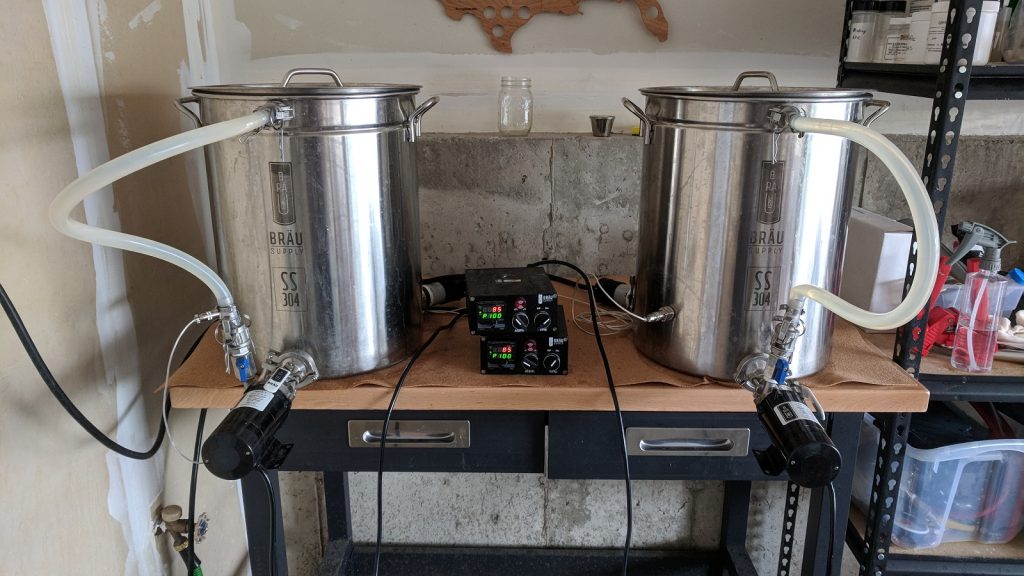
I measured out and milled two sets of grain, one of which was all Pilsner malt while the other had Carahell malt as 10% of the grist.
Both batches were step mashed and hit the same temperatures, each step lasting 30 minutes.
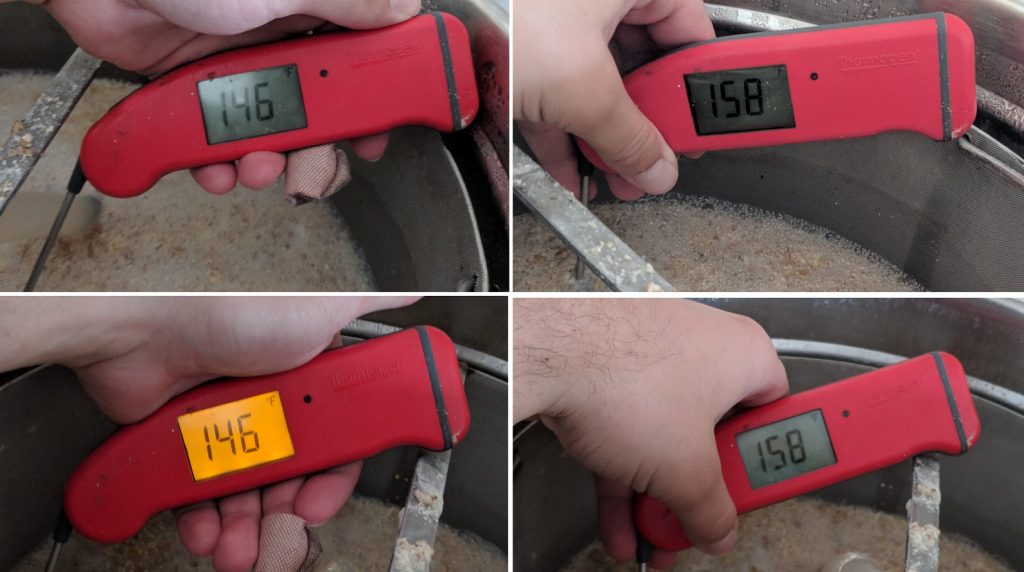
I took pH measurements 15 minutes into each mash that showed the all Pilsner malt batch had a slightly higher pH than the Carahell wort.
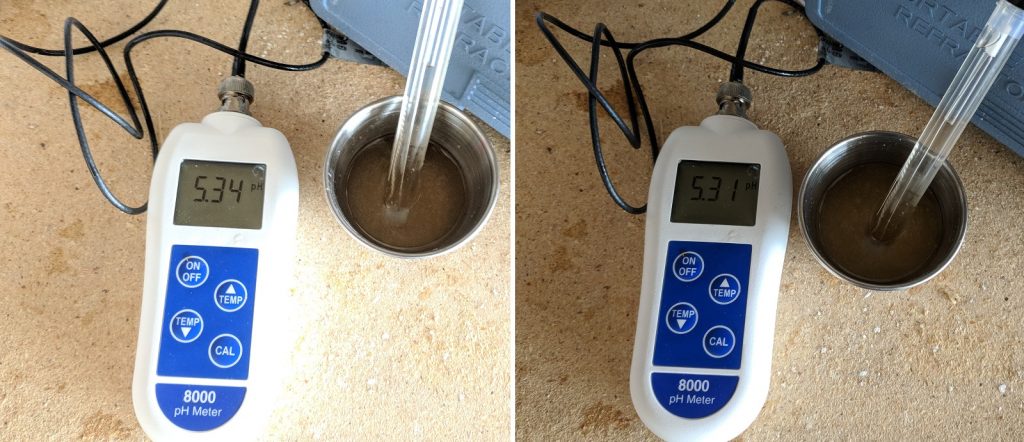
During the second mash step, I weighed out the hops for each batch.
When the mashes were complete, I removed the grain baskets and let them drip into the kettle to reach the same pre-boil volume. Both worts were boiled for 90 minutes with hops added at the times listed in the recipe.
Following the uneventful boils, I quickly chilled the worts with my CFC.
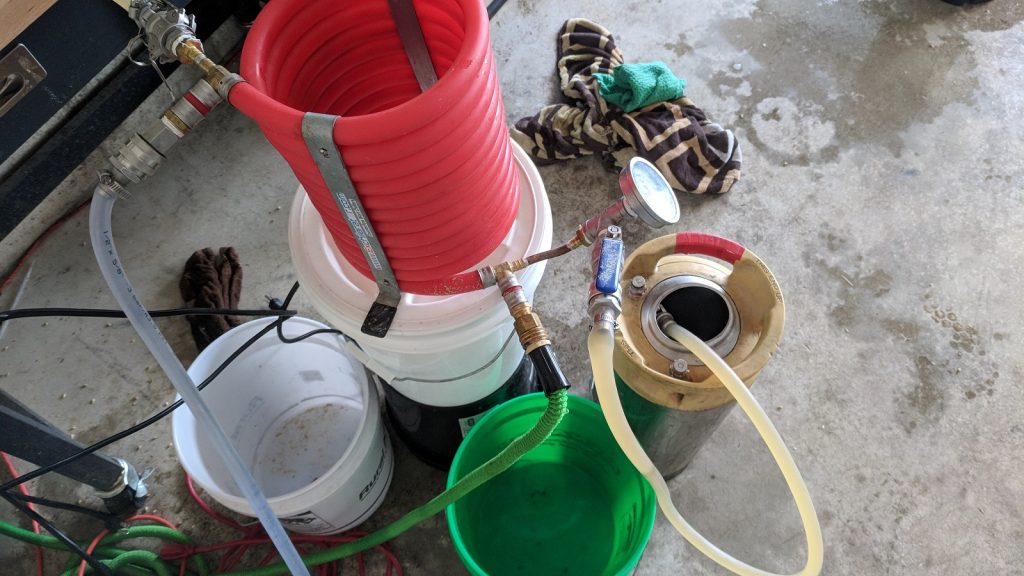
Hydrometer measurements showed both batches hit the same OG.
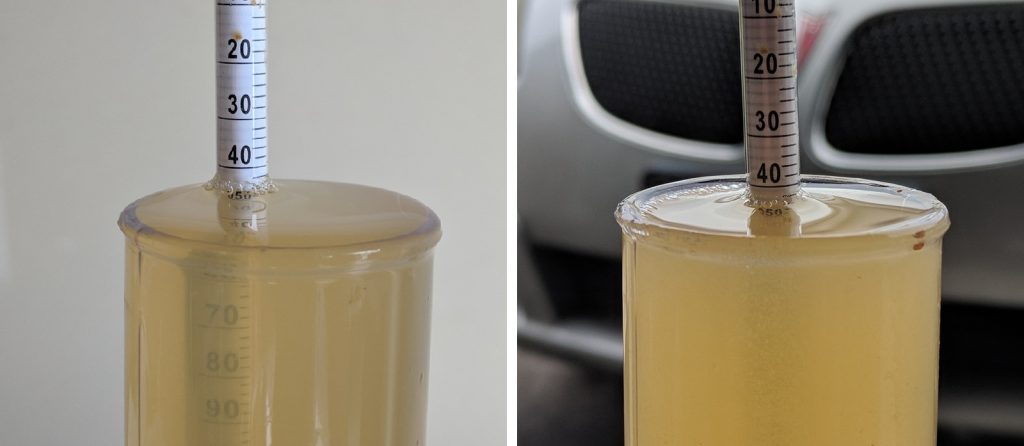
I placed both filled fermentation kegs in my chamber and let them finish chilling to my desired fermentation temperature of 49°F/9°C before pitching the yeast.
Both beers were active by the following morning. With signs of fermentation slowing down 8 days later, I transferred the beers to sanitized serving kegs and raised the temperature to 64°F/18°C for a diacetyl rest with spunding valves attached.
Hydrometer measurements a few days later showed both beers had reached the same FG.
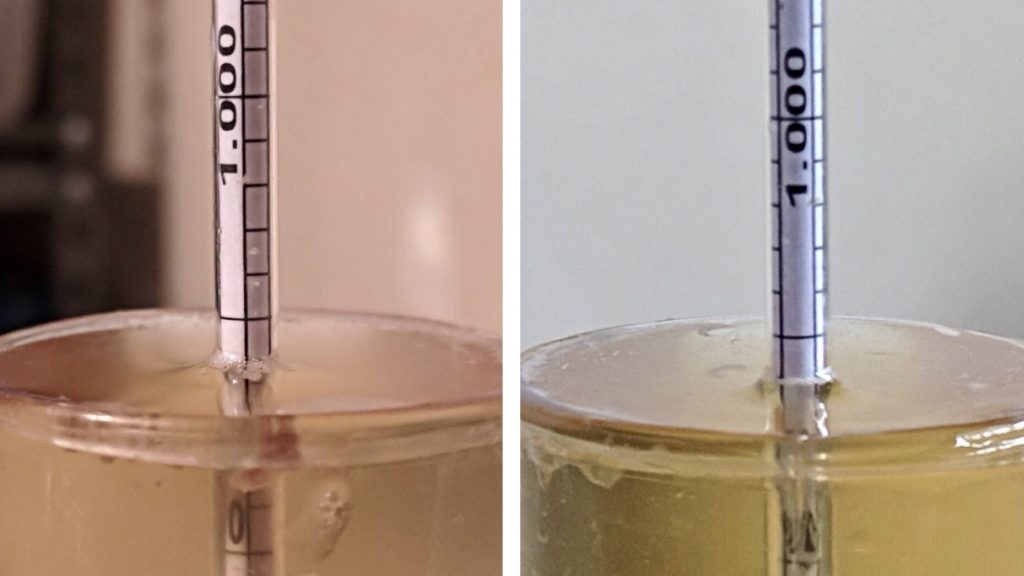
I lowered the temperature of the beers to 38°F/3°C and let them lager for another week before they were ready to serve to participants.
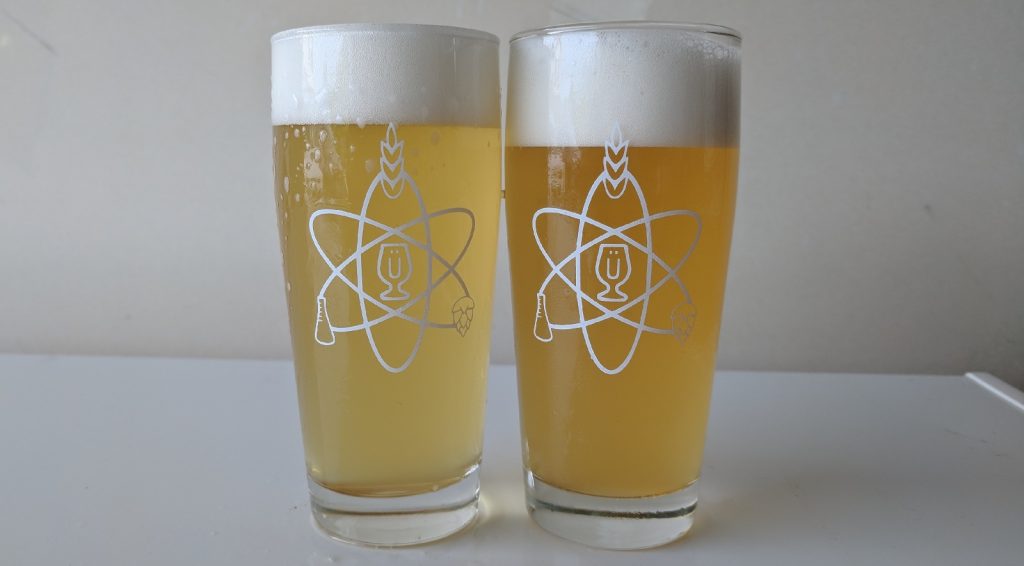
| RESULTS |
A total of 20 people of varying levels of experience participated in this xBmt. Each participant was served 2 samples of the beer that did not include Carahell and 1 sample of the beer made with Carahell in different colored opaque cups then asked to identify the sample that was unique. While 11 tasters (p<0.05) would have had to accurately identify the unique sample in order to reach statistical significance, 12 (p=0.013) were capable of doing so, indicating participants in this xBmt were able to reliably distinguish a beer made without the use of Carahell malt from one where it was included.
The 12 participants who made the accurate selection on the triangle test were instructed to complete a brief preference survey comparing only the 2 beers that were different. A total of 5 reported preferring the all Pilsner malt beer, 5 liked the Carahell malt beer more, and 2 reported having no preference despite noticing a difference.
My Impressions: Out of the 6 semi-blind triangle tests I attempted, I accurately identified the odd-beer-out 5 times, which is pretty consistent. While sampling the beers next to each other prior to attempting the triangles, I was pretty confident the beers were perceptibly different, the Carahell batch was noticeably more sweet, though not at all in a bad way. I enjoyed both of these beers quite a bit!
| DISCUSSION |
I tend to err on the side of caution when I approach recipe construction and use a deft touch when it comes using any type of Crystal malt. As such, I had no doubt the Kellerbier with the Carahell in the grist would be an unbalanced, overly sweet mess that made it easily distinguishable from the all Pilsner malt version. Indeed, tasters were capable of reliably telling the beers apart in this xBmt, suggesting Carahell used at 10% of the grist does have a noticeable impact, at least in a pale lager. However, said impact wasn’t exactly what I thought it would be.
In conversations with tasters who had finished the evaluation, many mentioned a stronger sweet character in the Carahell beer as being the defining factor, though none described it as being unpleasant in any way. Many tasters preferred the batch made with Carahell, and while I didn’t really have a strong preference, I rather enjoyed it myself. Curiously, nobody mentioned differences in body as playing a role in their decision, and I didn’t really notice anything on that front either.
As for claims that the use of Carahell can improve foam, I did a simple test to see for myself. I started by pouring a similar sized sample of each beer in identical glasses to observe any immediate differences.
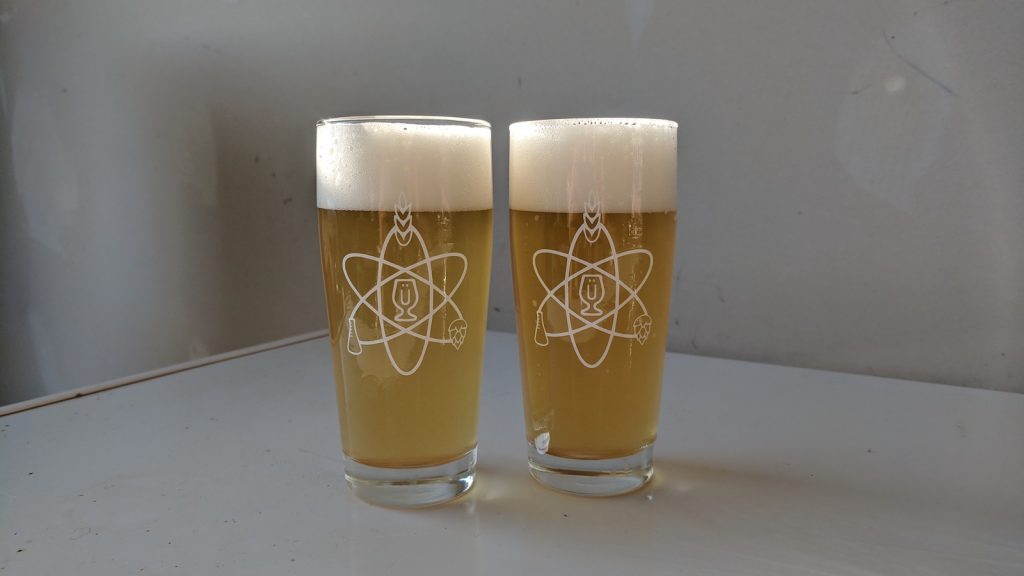
Then, I let the beers sit for 5 minutes to see if the Carahell had any impact on head retention.
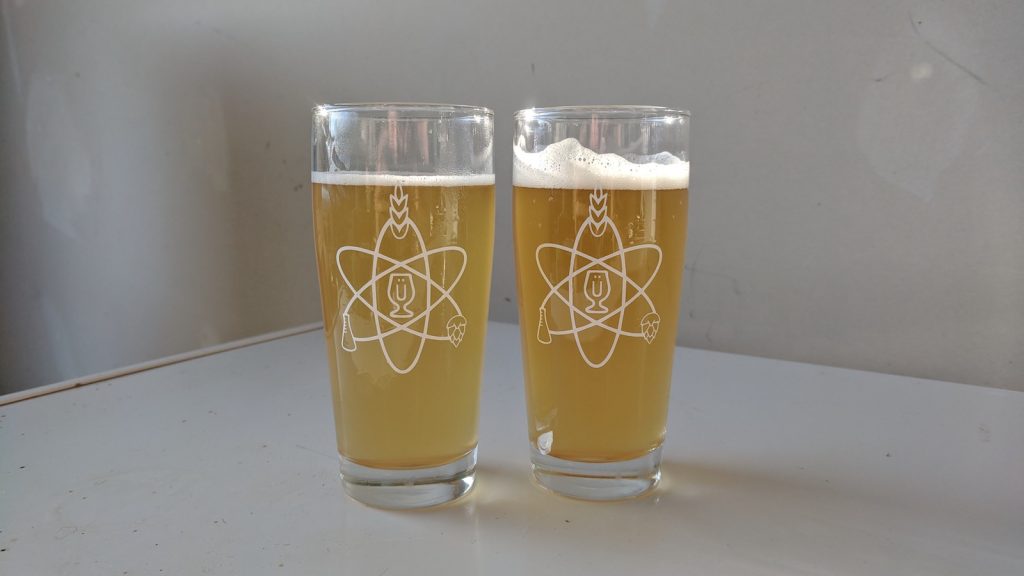
Unlike past experiments on malts purported to help with foam, it would seem Carahell actually does. This is something I observed multiple times over various days with beers served in various glasses.
Based on my experience with these xBmt beers, I look forward to using Carahell to add touches of malty sweetness to certain styles I brew. And while I’ll likely continue to refrain from using too much Crystal malt in general, I certainly plan to continue exploring the impact various versions have on beer.
If you have any thoughts about this xBmt, please do not hesitate to share in the comments section below!
Support Brülosophy In Style!
All designs are available in various colors and sizes on Amazon!
Follow Brülosophy on:
FACEBOOK | TWITTER | INSTAGRAM
If you enjoy this stuff and feel compelled to support Brulosophy.com, please check out the Support page for details on how you can very easily do so. Thanks!

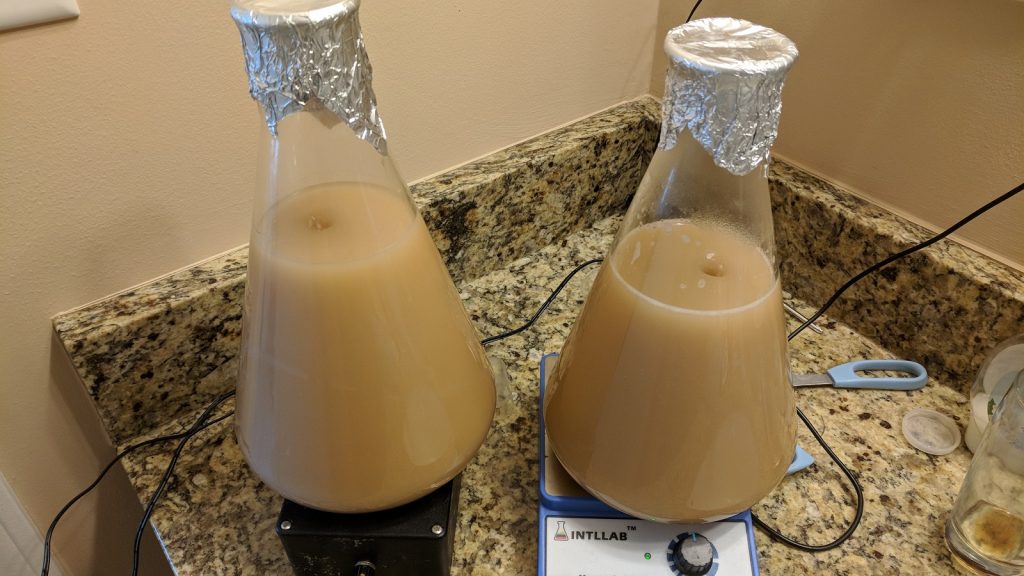

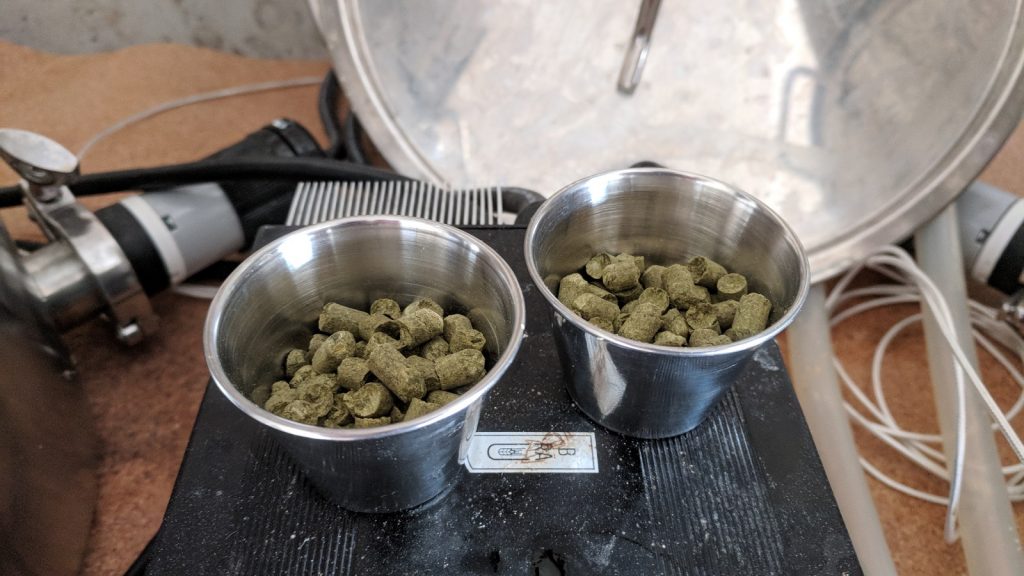

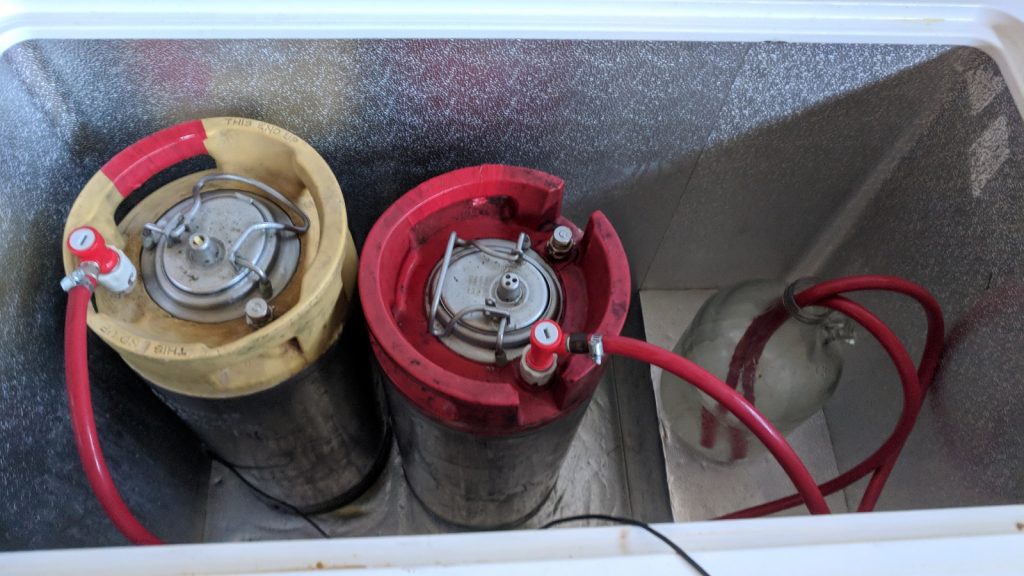
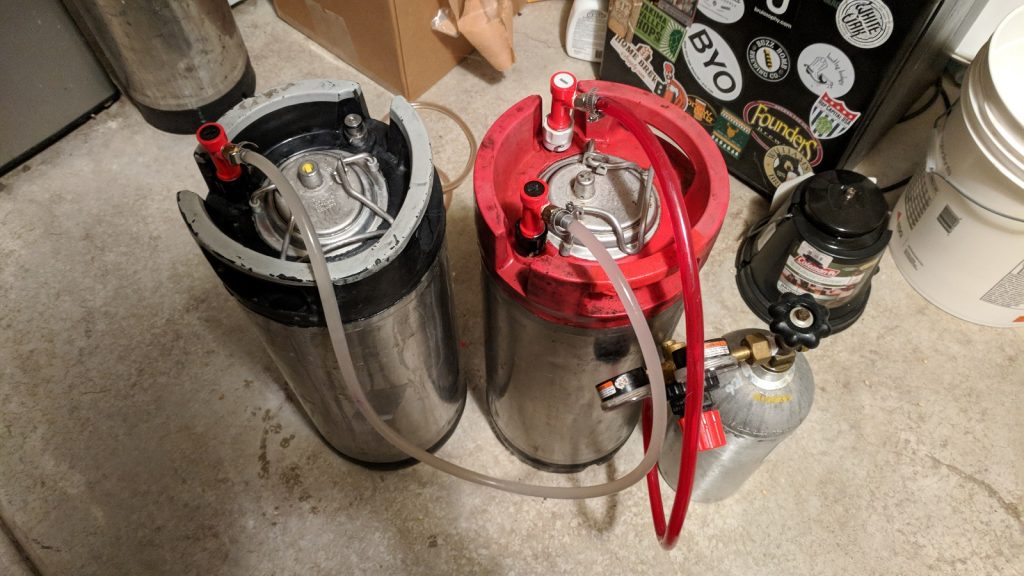










23 thoughts on “exBEERiment | Impact Carahell Has On Kellerbier”
Another damn interesting xBEERiment! Well done Matt.
Was this not a triangle test? Shouldn’t the participants have been served 3 samples?
Typo. Participants were served 2 samples of the all Pilsner malt beer and 1 sample of the Carahell beer. Fixed.
Which ph meter is that?
ThermoWorks 8000, which we reviewed here: https://brulosophy.com/2017/06/29/thermoworks-high-precision-ph-meters-product-review/
Good article, Matt and interesting results. Any reason for transferring to a serving keg for the diaceyl rest instead of raising temp/spunding in the fermentation keg?
He likely did it this way to avoid oxygen exposure.
Cool and makes sense. I’m looking to switch from glass carboy to keg fermentation…every bit of info helps. Thanks.
Interesting. while I’m not surprised a 10% dose was perceptible in such a light beer, I am a little surprised to see it wasn’t REALLY obviously sweet. I’d be interested to see the same experiment, except stacking the Carahell up against the same amount of regular C10, or perhaps Carapils or Carafoam.
I would be interested to see Carahell vs a standard American C10 as well. Seems like it should turn out insignificant but you never know. Nice work!
Briess crystal malts are significantly sweeter than most European crystal malts if that’s what you mean by regular C-10. I regularly sneak CaraVienne into my IPAs because it’s not that sweet but has a great flavor.
More out of interest than anything, I was wondering why you performed a stepped mash for this brew. I thought the Weyermann malts would be modified enough not to require one?
He didn’t do a protein rest. Looks like there was just beta and alpha rests.
Good job Matt! Well-controlled experiment.
Helles with 10% Carahell are not uncommon and turn out really well.
I do not know if you have any beer left :-), but 8-10 weeks after brew day the differences should be even more noticeable, at least to me…
Have you tried the beer after lagering (if you lagered it)?
Cheers !!!
Minor comments:
Color – I know that the Carahell beer is indeed a bit darker (Carahell is much darker than pils, like a Munich 2), and that your pic is not a light effect. Curious on why you did not comment on that…
Writing style – If you needed 11 for stats significance and you got 12, why write ONLY 12? The word ONLY sounds odd, like you did not meet your goal…
Errata
– 38F = 3.3C
Matt, did you ferment a full five gallons in each keg? Did you have any issue with blow off? Did you add Fermcap? I’ve never fermented more than four gallons in a keg and am curious as to whether a full five would present an issue.
Another fascinating write-up! I feel like I am coming home to crystal malts in pale ales a little bit, after being on the no crystal malts bandwagon for a couple years.
Given the introduction I was expecting a comparison of head retention (i.e. multiple pours and measure time to dissipate) but still very interesting results thanks!
I’m not too surprised by this as small additions of crystal malt have a big impact on certain beer styles, particularly British bitters. However, I’ve noticed a lot of homebrewers make small additions of all sorts of other malts instead of crystal, particularly base malts like Munich and Vienna. I suspect the quantities are so small that any effect on the beer is imperceptible. It would be interesting to see some of these tested. For now, looks like even light crystal works but dextrine malts like carapils are a waste of time.
Interesting…
I’m looking to brew a Helles and am investigating malt bill. In Jamil’s BCS book it says to stay away from any kind of crystal malt and uses sever percentage points Munich instead, along with over 90% Pilsner. But your experiment made it sound like Carahell wasn’t too overpowering.
How do you like the Weyermann Barke malt? From reading their description online it sounds like it is malted in a way it already has extra sweetness (?) in it from however they malted it. Since you have experience with it, I wondered what your thoughts were.
My LBS told me that Carahell was a trade name and it’s identical to any Crystal 10 on the market. I thought I read somewhere that it wasn’t that cut and dry so I ended up not buying any from him and ordering it online. After reading this, I’m glad I did – I think.
Wish I’d read this before making a fruit beer that came out too dry. Half pound of this in the mash might have created better balance.
How do you like the Exchillerator compared to the Jaded Hydra or King Cobra?
Thinking of trying some carahell in my next batch of Helles. I usually do 2.5% melanoidin malt and 97.5% pils malt. Would people recommend I go with the same recipe but just add in maybe 5% carahell? 10%?